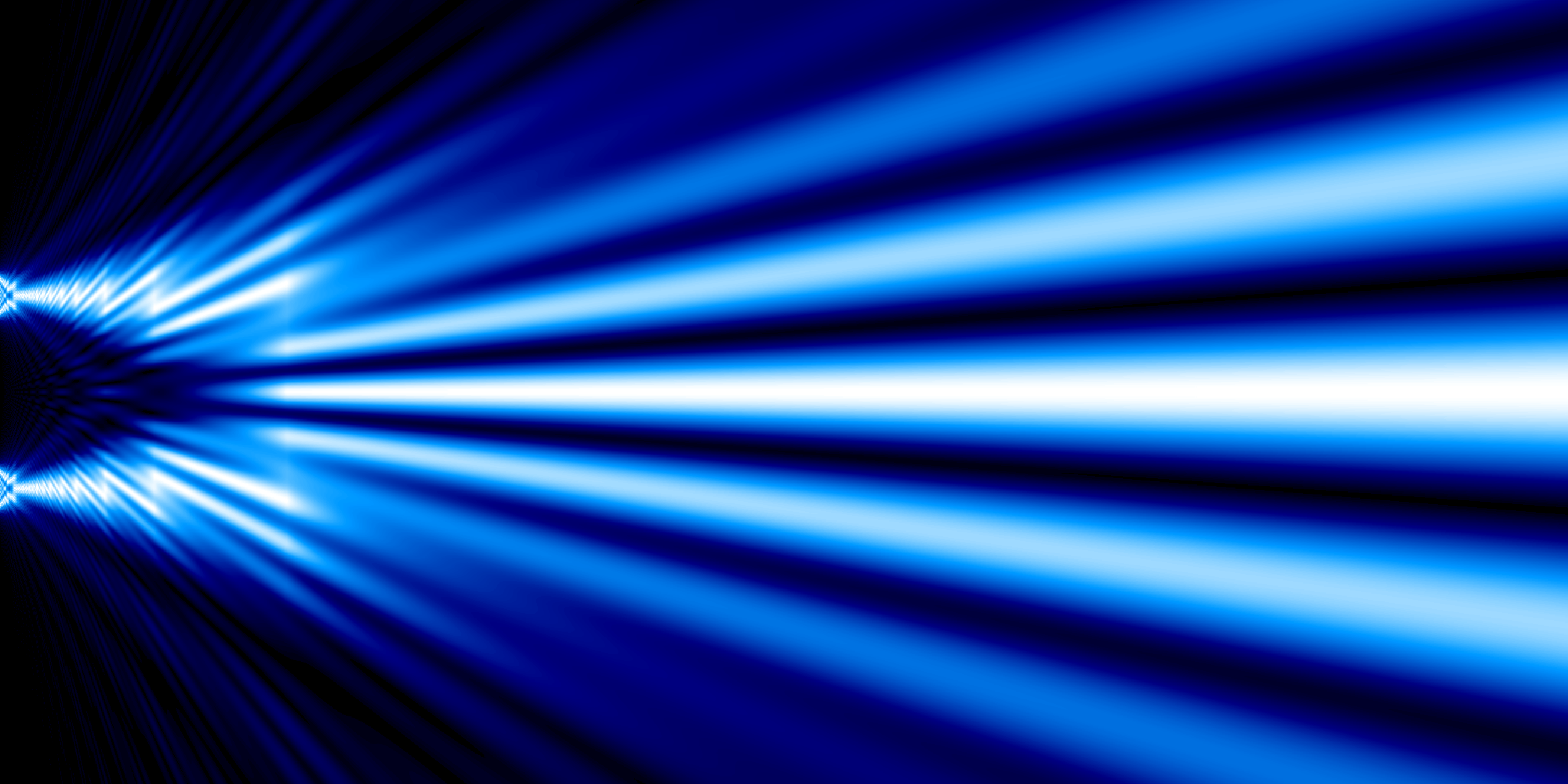Originally published 18 February 1985
“You can’t lose doing physics,” says physicist Mike Horne. “Either you have the thrill of stumbling upon something new or you have the pleasure of seeing accepted principles working perfectly.”
Horne is a theoretician attached to Clifford Shull’s laboratory at MIT. Shull and his colleagues are using a device called an interferometer to study the quantum world of subatomic particles. In particular, the interferometer is an instrument aptly suited for investigating the mysterious wave/particle duality that is at the heart of quantum physics.
Splitting a light wave
The principle of the interferometer was first used in the 19th century as a convincing demonstration of the wave nature of light. In the optical interferometer, a light wave is split and sent traveling along two different paths. Mirrors bring the two halves of the wave back together. The converging beams “interfere,” that is, they reinforce each other or cancel out depending on whether the peaks and valleys of the combining waves are in phase or out of phase. If wave crests align with wave crests, a bright spot will appear on a screen. If crests align with troughs, the screen will be dark. Because light waves are so compact (20,000 would fit across your fingernail), the character of the recombined wave is very sensitive to differences in the two light paths. For example, slight differences in the lengths of the two paths, or differences in the velocities of the waves along the two paths, will cause the waves to be in step or out of step when they recombine.
According to the theory of quantum mechanics, subatomic particles have a wave-like character. The electron, proton, and neutron, for example, although usually thought of as tiny localized bits of matter, are more accurately thought of as waves. In the appropriate circumstances, these particles can be made to “interfere,” that is, add up or cancel out like waves of light.
Shull’s MIT lab is one of the few places in the world where interference experiments are being performed with neutrons, experiments like the 19th century experiments with light. Ordinary mirrors cannot be used to redirect neutron beams. Rather, the neutrons are deflected by causing them to bounce off rows of atoms in highly ordered crystals. Shull’s interferometer is carved from a single crystal of silicon about the size of a hand. It is shaped in cross-section like a letter E. A beam of neutrons is directed at the bottom of the E. Part of the beam is deflected and two beams go streaming in a V‑like fashion toward the middle crystal. They are deflected again and brought back together at the top of the E. Neutrons emerging from the interferometer in the recombined beam are “counted.”
The interferometer provides a classic demonstration of the enigmatic wave/particle duality inherent in matter at the quantum level. Since the interferometer is as wide as a hand, it seems clear that a particular neutron in the incident beam must travel along one path or the other toward its ultimate destination. Indeed, a detector placed in one of the two paths will detect neutrons that are wholly localized. In this sense, the neutrons behave entirely like particles. But interference effects are observed at the exit of the crystal where the beams recombine. The merging beam is strengthened or weakened as conditions are varied along the two paths, exactly as in the optical interferometer. This could only happen if the neutrons are behaving like waves, and if parts of the wave associated with an individual neutron are traveling along both paths simultaneously!
Horne describes how he used to stick his thumb into the interferometer between the beams. It gave him “shivers,” he says, to realize that a single neutron, a particle vastly smaller than an atom, was passing on both sides of his thumb at the same time.
A strange world
Does that sound impossible? Physicists have learned to live with the “impossibility.” Neutrons inhabit an Alice-in-Wonderland world where a particle can be in two places at the same time, or no place at all, except when you go looking for it, and then … “Oh, dear,” one is likely to say with Alice, “things flow about so here!” Common sense flounders in the face of quantum reality. What is important to physicists is that they have a mathematical theory — quantum mechanics — that enables them to precisely calculate the outcome of any experiment involving atomic particles. And for more than half a century that theory has stood the test of innumerable experiments.
The neutron interferometer is a particularly sensitive device for testing the quantum mechanical description of matter. The nature if the emerging beam is delicately dependent upon conditions along the two paths. For example, the MIT group has rotated the interferometer and applied magnetic fields to study the effect of acceleration and magnetism on neutron waves. So far, the observed outcomes of these experiments have been in perfect harmony with the quantum mechanical predictions.
Future improvements in the precision of these tests will require more sophisticated calculations to find out exactly what quantum theory predicts for neutrons traveling through chunks of silicon. According to Horne, “the interferometer will take the measure of our ability to reason quantum mechanically.”



